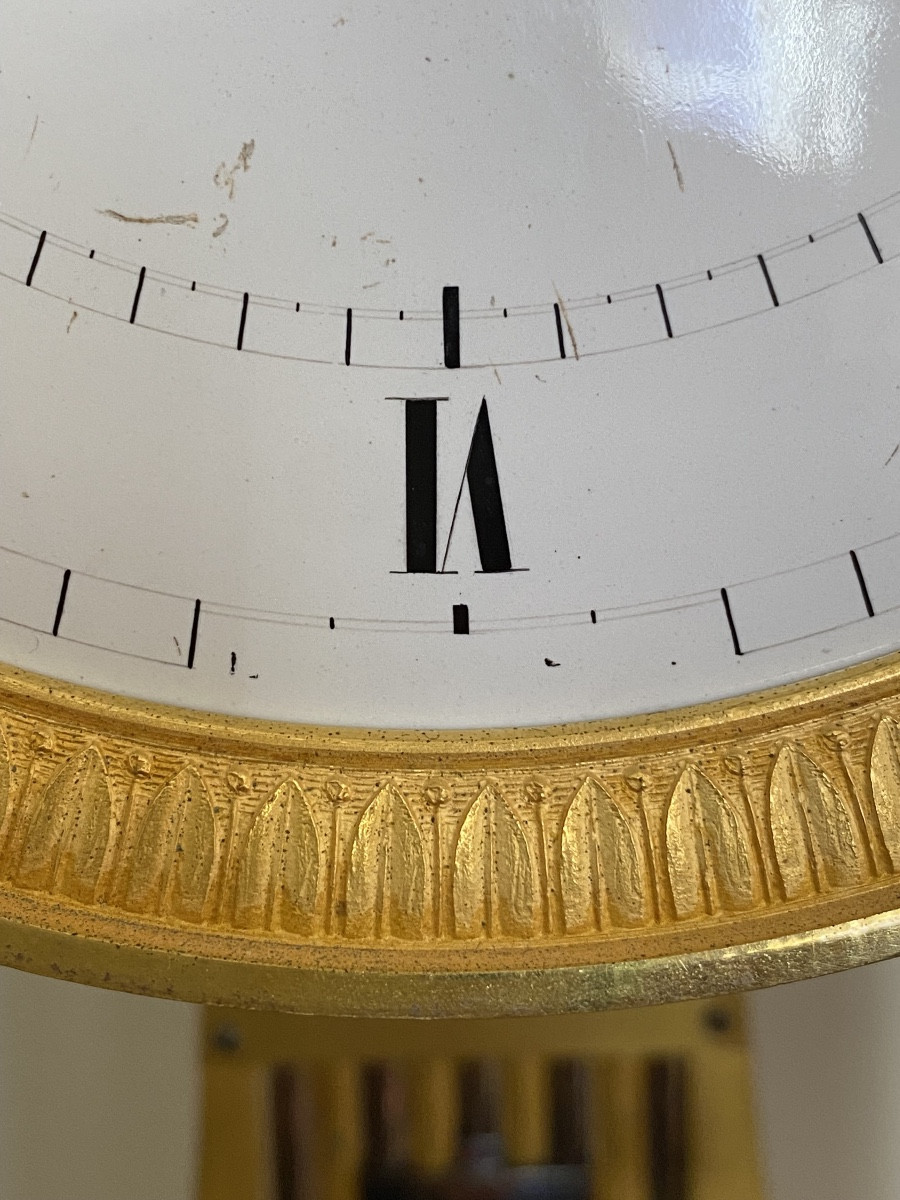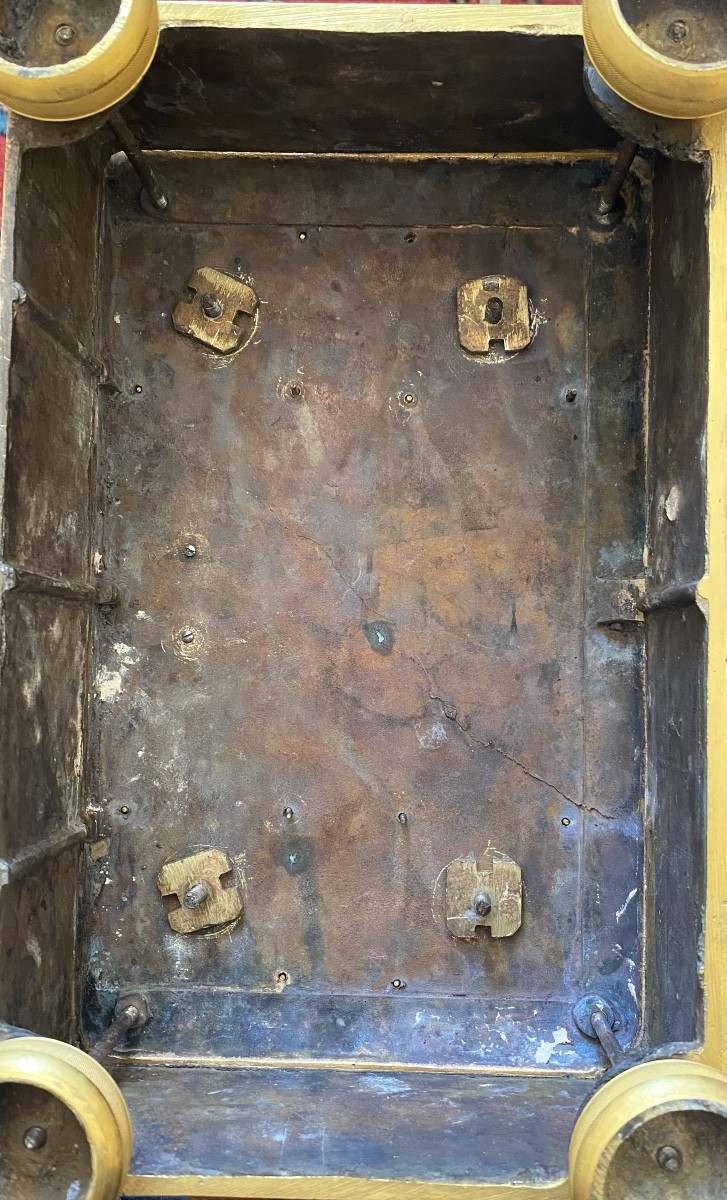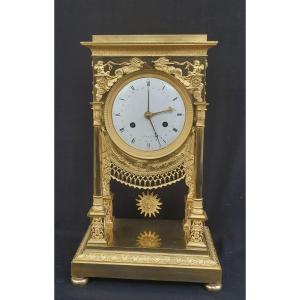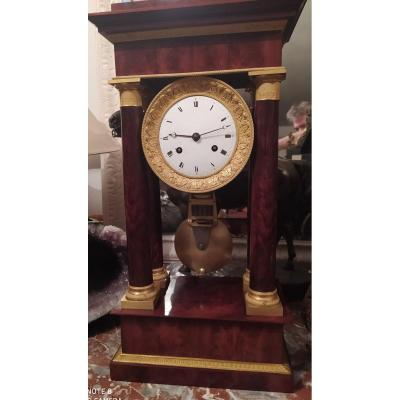A refined precision regulator clock in gilt bronze with four columns featuring Ionic capitals.
The base, decorated with a frieze, rests on four flattened spherical feet.
The dial is white enamel with black numerals, minute markings on the perimeter, and half-second markings at the center of the dial. The hands are made of blued steel, with a central balanced sweep second hand.
Movement Characteristics:
21-day power reserve.
" chevilles" escapement
Central second hand.
"couteau" suspension.
Heavy compensated pendulum with a brass and steel grid, having an oval section (for better penetration through the air, thus limiting friction).
It ticks the half-second (1-second period).
Pendulum height adjustment via screw, with a display window for indication.
Pendulum isochronism adjustment via screw.
stringing hours and half hours
Condition Report: Excellent condition, the dial is original with no restoration, and the thick original mercury gilding has both matte and glossy effects. The movement is clean and in good working order. The second hand is 19th century, not original.
Signatures :The back of the dial (reverse enamel) has two red signatures. The first one is unreadable, and the second is:
Destigny. This is a marking by the enameler to identify the owner, who was the watchmaker. The dial has space reserved for the signature beneath the number 6, with traces still visible. The disappearance of the signature may be explained by its cold marking by the watchmaker, as opposed to being done by the enameler (which would involve firing), making it fragile. The markings at the 29th and 31st minutes between two lines further confirm that this space was indeed reserved for the signature.
DESTIGNY refers to Pierre Daniel Destigny, born in Sammerville. He was an apprentice at the Royal Manufacture in 1787. He set up shop in Rouen in 1798 and won a medal at the 1818 exhibition. He ceased his activities at the age of 78 in 1848 and passed away in 1852.(after the : Dictionnaire des Horlogers Français by Tardy)
Annotations of interventions:
on springs: Furnisher in January 1818,
on barrel covers: cleaning by Ch. Chevalley, worker at Mathey and Dumont, July 1865,
on drum movement / repair made by J. GRANGE, worker at Maison Mesnard, April 1897.
Dimensions:
Height: 53 cm
Width: 30.5 cm
Depth: 19 cm
Weight: 14.9 kg
End of the Empire period, circa 1815.
Shipping: Please contact us for shipping conditions

















































 Le Magazine de PROANTIC
Le Magazine de PROANTIC TRÉSORS Magazine
TRÉSORS Magazine Rivista Artiquariato
Rivista Artiquariato